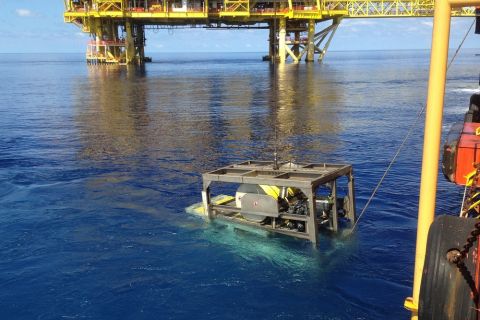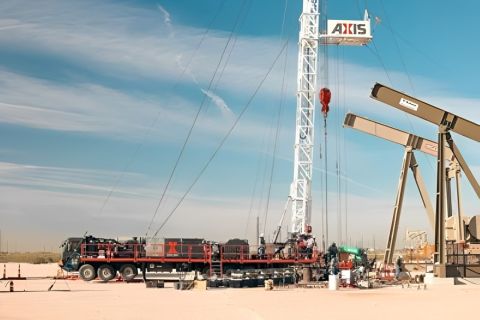
(Source: Zebra Technologies Corp.)
Keeping rotary equipment up and running in oil and gas facilities is vital to maintaining process flow. The failure of a mission-critical or supporting compressor, fan, blower or pump necessary to offshore or onshore extraction, or midstream and downstream distribution, refining or storage, can interrupt production resulting in costly losses in product-stream revenue.
Oil and gas operations maintain varying levels of frequency-based preventative maintenance, based on manufacturer’s specifications. But due to the sometimes thousands of rotary equipment units to be inspected and serviced, many of these rotary machines are not precisely monitored enough to predict early-onset disruptions, which eventually result in machine and system failures.
Condition-based maintenance
A growing number of oil and gas facilities have moved away from frequency-based preventative maintenance, and are now adopting a more precise condition-based maintenance approach to improve the quality of monitoring and maintenance of their rotary equipment. These programs have proved essential in significantly reducing equipment failures and enhancing system reliability and uptime, while improving rotating equipment longevity, and reducing overall facility operational costs.
Condition-based maintenance, with particular focus on oil and gas upstream, midstream and downstream facilities, is one aspect of John Crane’s Asset Management offering to improve reliability in maintenance processes, increase asset efficiency and process reliability. The John Crane program represents an excellent example of condition-based maintenance for closer examination.
“Condition-based maintenance can be separated into three basic functions,” said John Morrison, managing director of John Crane Asset Management Solutions. “One is the continuous monitoring of rotating equipment for pertinent data on system performance. Another is the analysis of the data to assess machine performance over time, specifically to identify trends toward potential faults.”
“The third is that it alerts maintenance personnel of machines exhibiting rotary aberration while continuing to analyze fault-risk potential from the affected machines until they have been repaired. To execute a successful condition-based maintenance program, all three of these components must be in place and functional,” emphasized Morrison.
Condition monitoring
Condition monitoring is essential to condition-based maintenance. Data are collected from one or more functions and/or conditions of a rotary machine. Depending on the objectives of the condition-based maintenance program, these can include vibration, lubrication, temperature, pressure, motor current signature and electric discharge. These data can be collected manually, or via a wireless network, and then input into a maintenance database for subsequent analysis.
Vibration, for example, is a key factor recorded, and every machine has a unique vibration characteristic. Multiple recordings of vibration from a specific machine will enable a baseline to be set for that machine. This then can be repeated for hundreds or thousands of machines in a facility. So, even minor changes in vibration in any singular machine may signal the need for a closer inspection. But before any analysis can be deemed reliable, a baseline of potentially 10 vibration recordings per machine should be obtained.
With lubrication, the key criterion is getting quality samples. That means identifying the best location on the machine to take samples that will indicate something about the machine. But that is just the start; samples need to be taken from the same locations repetitively to establish a reliable baseline, just as with vibration. The lubrication samples are then sent to a lab for analysis, the resultant data input into the maintenance database for further evaluation.
Recordings of other machine criteria are handled similarly, and always with a repetitive nature to establish a baseline for each condition and for each machine.
“It takes a bit of time to understand machines and their particular failings,” said Claire Weatheritt, a John Crane Services manager. “Consequently, multiple readings are necessary. But not all rotary equipment is easily accessible, sometimes due to hazardous locations. In these cases, online monitoring is an ideal way of capturing the data coming from these machines.”
What constitutes a poor condition monitoring program?
“Not enough samples being taken from each machine; samples being taken from different locations on the same machine; not recording data from the machines into the maintenance database; and a lack of continuity of the program due to personnel transfers or leaves,” said Weatheritt. “Subsequent analysis of the data for system faults will only be as good as the consistency of collection protocols and continuity over time of data collection.”
Failure analysis of machine data
Although the data collected from condition monitoring is frequently undertaken by oil and gas maintenance personnel, the analysis of this data is a different matter altogether, because of both the complexity of the data and the usual unavailability of qualified engineers and technicians on staff to interpret and cross-analyze the data sets collected. Consequently, the analysis is left to condition-based maintenance experts, such as John Crane Asset Management, who have the resources and qualified engineers to determine reliable outcomes from the data.
“We take the readings from the machines and feed it into predictive diagnostics, which then shows up predictive failures,” said Gordon Ellis, operations manager at John Crane. “It all starts becoming a lot clearer. For instance, we will do vibration and oil analysis against a critical rotating equipment system and cross-reference the data to get a holistic view of the machine. Because our people here at John Crane understand in-depth mechanics about lubrication in rotary equipment, and how that relates to vibration, we can get a leg up on a developing fault that otherwise would get missed by someone less experienced.”
Once 10 sets of data for each criterion on a machine have been collected, and input into the database, John Crane’s team starts adjusting the frequencies and adjacent statistical alarm settings. When an alarm sounds on a machine, they know that the machine has had something happen within it, which is abnormal from its baseline operating state.
Reporting and managing potential faults
Once potential machine faults have been identified, this data is shared with the oil and gas facility maintenance team, so actions can be taken to ensure secondary rotary equipment is in place and functional should a fault occur. Then the maintenance team can take steps to perform planned repairs on the equipment to resolve the risk.
“Ensuring that the work is actually performed and the risk abated is a vital component of condition-based maintenance,” added Ellis. “The [condition-based maintenance] program may be monitoring and managing 1,000 or more machines in a facility. A typical maintenance crew in a plant may not have the ability to keep track of and manage this volume of data. Consequently, even though potential faults may be identified, unless there is a system in place to manage their repair, the liability may not actually get resolved. This is where an outside-managed [condition-based maintenance] program can be an extremely valuable asset.
The central KPI of a condition-based maintenance program is improved system reliability. Improving reliability is the key to ensuring uninterrupted production and lowering the total cost of ownership. The benefits of condition-based maintenance can be wide-ranging and considerable for any oil and gas facility.
Recommended Reading
TGS, SLB to Conduct Engagement Phase 5 in GoM
2024-02-05 - TGS and SLB’s seventh program within the joint venture involves the acquisition of 157 Outer Continental Shelf blocks.
StimStixx, Hunting Titan Partner on Well Perforation, Acidizing
2024-02-07 - The strategic partnership between StimStixx Technologies and Hunting Titan will increase well treatments and reduce costs, the companies said.
Forum Energy Signs MOU to Develop Electric ROV Thrusters
2024-03-13 - The electric thrusters for ROV systems will undergo extensive tests by Forum Energy Technologies and SAFEEN Survey & Subsea Services.
Axis Energy Deploys Fully Electric Well Service Rig
2024-03-13 - Axis Energy Services’ EPIC RIG has the ability to run on grid power for reduced emissions and increased fuel flexibility.
TotalEnergies Rolling Out Copilot for Microsoft 365
2024-02-27 - TotalEnergies’ rollout is part of the company’s digital transformation and is intended to help employees solve problems more efficiently.





